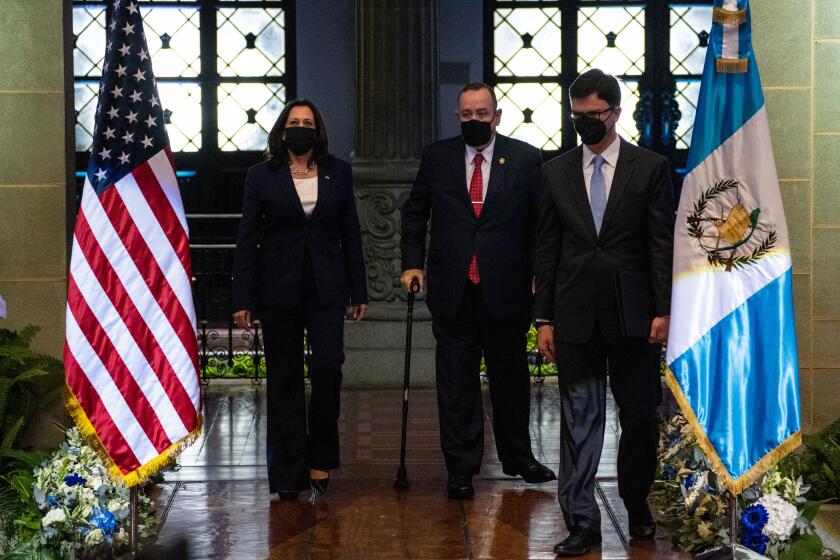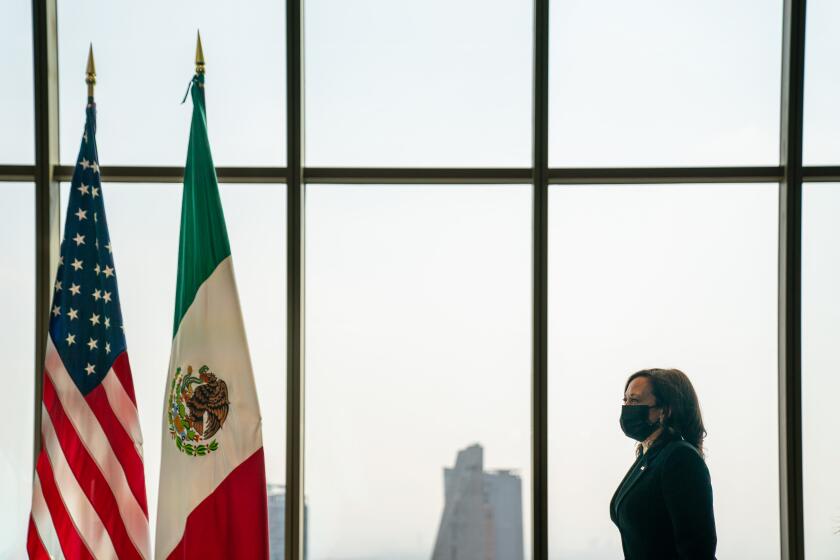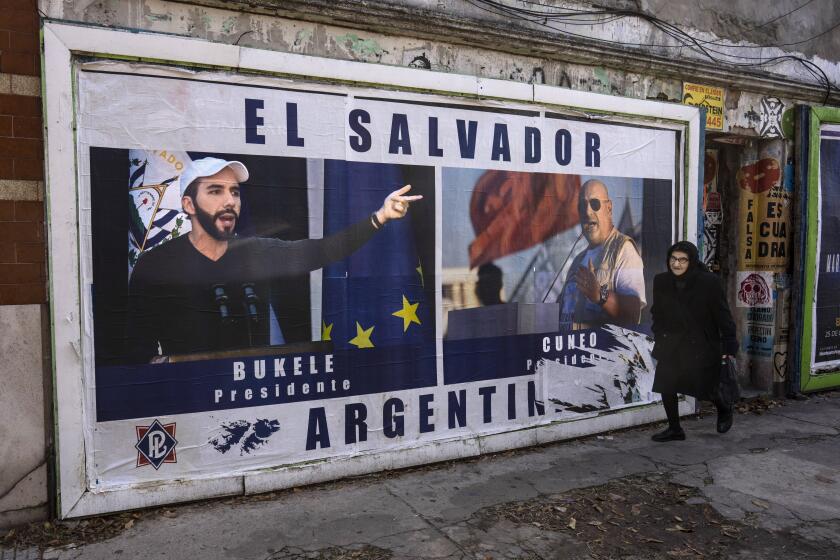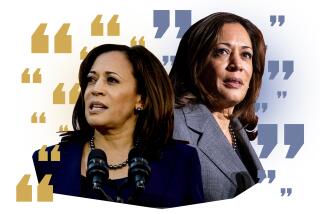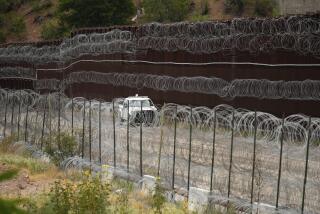Kamala Harris was tapped to fix the immigration crisis. Then the problem shifted
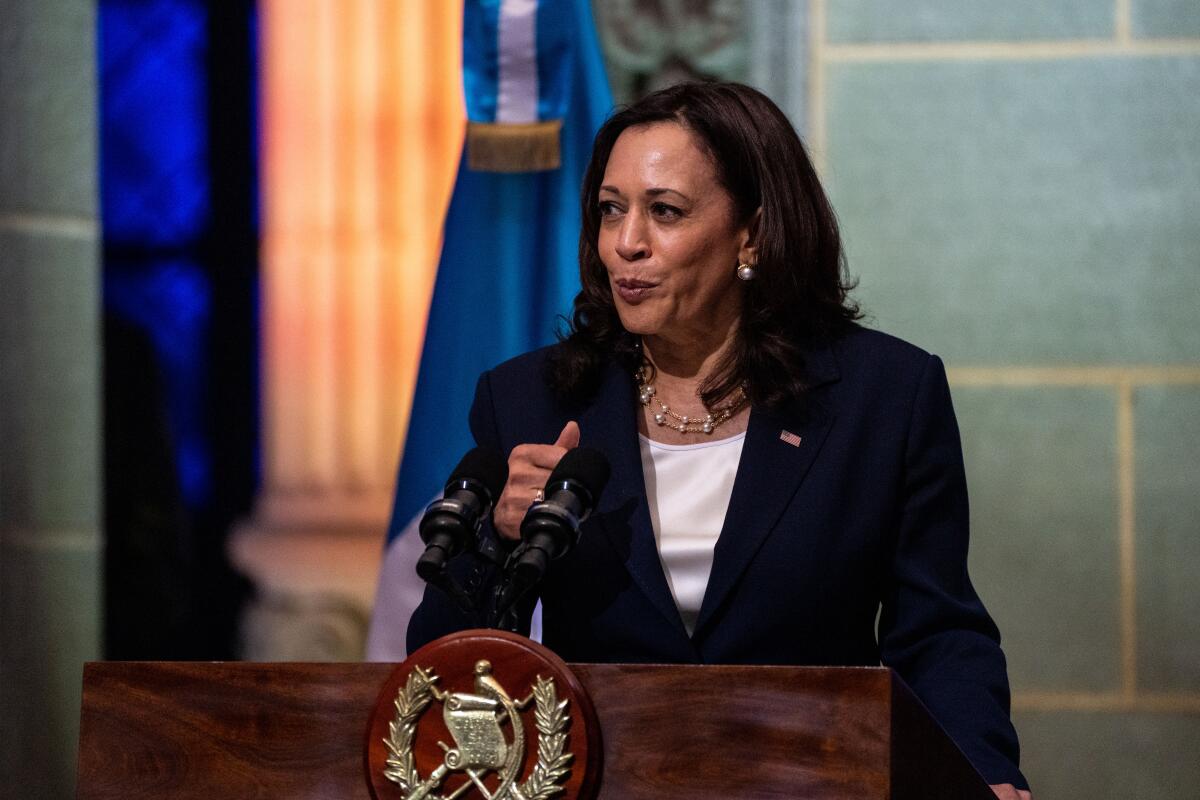
WASHINGTON â President Biden, facing a political crisis at the U.S.-Mexico border in the early days of his administration, tapped Vice President Kamala Harris to lead a high-profile response that would bet heavily on improving conditions in three Central American countries.
It was known as the âroot causesâ strategy. The border, administration officials argued, was only a symptom. If the United States could improve economic, security and political conditions in Honduras, El Salvador and Guatemala, fewer people would risk the perilous journey and much of the problem could be solved, they reasoned.
Three years later, the border crisis has only deepened, with record numbers of migrants from all over the hemisphere overwhelming the border, and a president on the defense as Republicans make immigration a key issue in his reelection campaign.
Specialists in migration say the administration miscalculated, choosing a narrow and time-consuming strategy that failed to anticipate the shifting nature of migration.
âIt was focused on a long-term scenario and it was focused on countries that are no longer the primary sending countries,â said Ariel Ruiz Soto, a senior policy analyst with the Migration Policy Institute, a nonpartisan research group.
Kamala Harris was asked to find ways to slow migration from and curb corruption in Central America. But it could take years.
Today the record number of migrants at the border has been fueled by people fleeing Venezuela, Nicaragua, Cuba and Haiti, who together accounted for 583,000 border arrests in the 2023 budget year.
The three countries in Harrisâ original portfolio showed significant drops in annual migration, from more than 700,000 border arrests in the 2021 budget year to fewer than 500,000 in 2023.
But they are back up again in the first three months of the 2024 budget year.
Mexico, meanwhile, is still the largest source of migrants, with 717,000 in 2023.
âYou canât have a âroot causesâ strategy for every country in the Western Hemisphere,â said Aaron Reichlin-Melnick, policy director of the American Immigration Council, an immigrantsâ rights group.
The administrationâs struggle to follow the moving target is part of a decades-long pattern, said Ruiz Soto. Smugglers and migrants tend to adapt more quickly to dynamics on the ground than American policymakers, he said, noting that Venezuelans are now more likely to risk coming north than Guatemalans because there are fewer flights sending them back home.
âThe U.S. immigration enforcement system is a reactionary one,â he said. âIt responds to whatâs happening the day of. It doesnât look forward.â
Administration officials say that Harris should be judged on the pledges of $4.2 billion of private investments she has spurred and the approximately $1 billion a year in U.S. aid to the three countries in her portfolio. And they argue her high-profile task was only part of the plan to deal with the border crisis.
Biden is now locked in negotiations with congressional Republicans, who are balking at a border enforcement deal that they had initially proposed.
âThereâs root causes,â White House Press Secretary Karine Jean-Pierre said at a recent briefing, referring to Harrisâ portfolio. Then âthereâs dealing with a broken system, which is why we put forth an immigration proposal that deals with policy and funding.â
In addition to private investment, administration officials point to efforts to connect 4 million Central Americans to the internet and train 400,000 people in skills programs, along with less tangible efforts to promote rights for laborers and women in the region.
Harrisâ national security advisor, Phil Gordon, has also been instrumental in setting up offices in Guatemala that screen migrants seeking refugee status and other legal pathways to entry without going to the border. The program now also includes Colombia, Ecuador and Costa Rica.
Kamala Harrisâ biggest assignment is in Latin America. But she hasnât gone there much. She has a big assignment coming up representing the U.S. at the Summit of the Americas in Los Angeles.
The administration says more than 120,000 people have applied through the centers as of mid-January.
Itâs hard to measure the impact of such programs when dynamics outside U.S. control are often the biggest factors.
Harris has spent little time in Central America, most recently skipping the inauguration of Guatemalan President Bernardo ArĂŠvalo. His Jan. 15 swearing in was a victory for the administration, which backed him publicly and privately amid fears that he would be prevented from taking office.
An administration official said Harris plans to meet with ArĂŠvalo in Washington in March, where she will announce new private sector investments.
ArĂŠvaloâs ascension is viewed as a positive for one of Harrisâ top goals: improving democratic institutions. Harris and other administration officials have said that corruption and failing institutions are key factors â along with crime, poverty and lack of security â that prompt people to leave their homes.
The Biden administration began to see Guatemala âas a defense of democracy issue and I think correctly,â said Eric L. Olson, director of policy for the Seattle International Foundation, who has written, sometimes critically, about the âroot causesâ strategy when it was deployed during the Obama administration.
Guatemala is an instance where improving democracy is likely to help slow migration, he said.
âIf you donât help the guy whoâs overwhelmingly elected make it to the finish line, then youâre really going to have a whole other level of immigration problems,â he said.
Yet whatâs good for democracy is not always good for slowing migration.
El Salvadorâs president, Nayib Bukele, has alarmed human rights advocates with his broad crackdown on gangs that includes widespread arrests and detentions. He ran for reelection Sunday in defiance of a constitutional term limit. But Bukeleâs crackdown has played a big role in stemming migration from El Salvador, as residents who once feared gang violence are no longer compelled to leave, according to specialists.
Politicians in Latin America are adopting Salvadoran President Nayib Bukeleâs style â aviator sunglasses, leather jackets, baseball caps â and his politics.
âItâs a massive contradiction,â said Reichlin-Melnick. âAnd beyond that, thereâs also an increasing willingness of the United States to accept authoritarianism in exchange for those authoritarians cracking down on migrants coming to the U.S. border.â
An administration official insisted that Biden and Harris remain committed to both human rights and immigration enforcement, pointing to specific efforts to curb extrajudicial killings and professionalize security forces.
Harrisâ conservative critics take issue with another assumption in the âroot causesâ plan: that aid projects and foreign investment at home will prove more alluring to people than coming to America.
âThe root cause of the migration right now is the tremendous pull into the United States,â said Sen. James Lankford (R-Okla.), who is leading Republican border negotiations. âIf you cross the border, youâre allowed to be able to come in the country and you get a work permit right away. I mean, thatâs the real pull factor.â
For most migrants arriving at the border, thatâs not true. Asylum seekers must wait at least six months after filing their petitions before they can receive work permits.
Staff writer Andrea Castillo contributed to this report.
More to Read
Get the L.A. Times Politics newsletter
Deeply reported insights into legislation, politics and policy from Sacramento, Washington and beyond. In your inbox three times per week.
You may occasionally receive promotional content from the Los Angeles Times.

